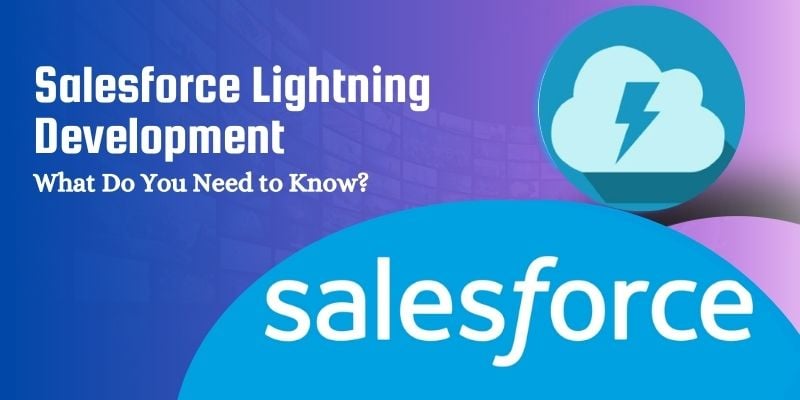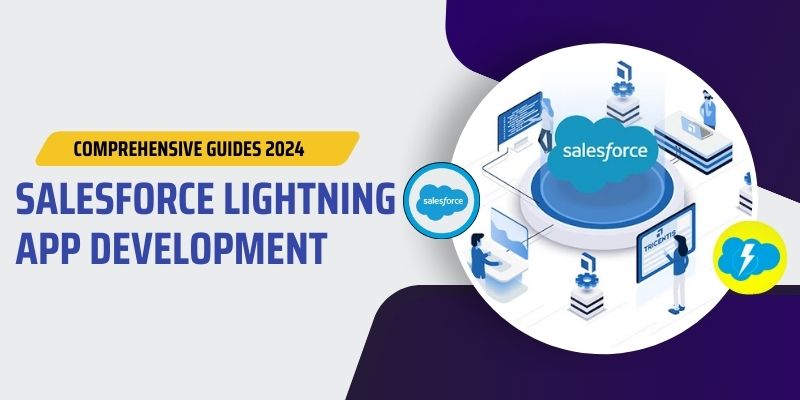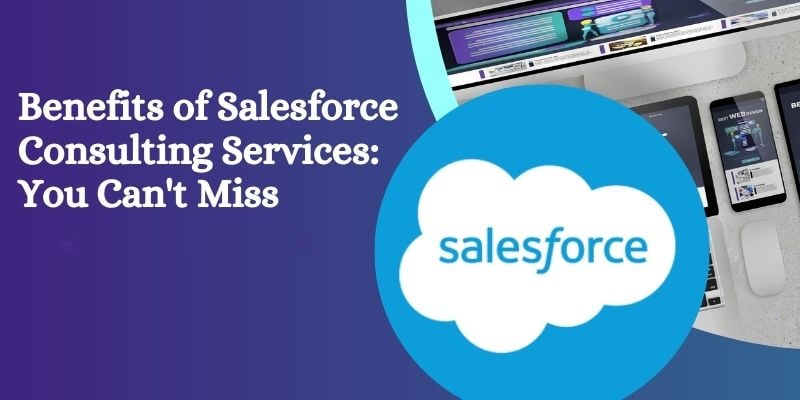With the rapid evolution of technology in today's world, Salesforce Lightning Components have been recognized as game-changing in application development. The Lightning Components offer an extensive framework to create interactive and dynamic user interfaces that integrate seamlessly with Salesforce.
This is crucial if you're an experienced developer or are just beginning to learn the basics of Lightning Components. In this blog that is brought to you by JPLoft, we'll start an adventure to learn Salesforce Lightning development, giving you the knowledge to build robust and effective apps.
When you understand the concepts behind Lightning Components, you'll be able to create contemporary, interactive user experiences that are modified to suit particular business requirements.
In this article, we'll look at the components' structure, their advantages, and their crucial role in improving users' productivity. Through the experience, you gain and contribute to developing lightning-fast apps that simplify operations, improve customer satisfaction, and elevate your profession to new heights.
Lightning Components are run on the client's side and are constructed or eliminated depending on their requirements. They can be used in conjunction with existing ones and increase the efficiency of your work.
Read Also: Salesforce Development: A Comprehensive Guide 2024
Understanding Salesforce Lightning
Salesforce Lightning represents a transformative transformation in the way that users use Salesforce. It is a paradigm shift in how users interact with the Salesforce platform. It offers an intuitive and modern experience for developers and users on the ground. It is at the core of Salesforce Lightning, a framework that allows the development of responsive and dynamic web-based applications that are part of Salesforce.
In contrast to its predecessor, Salesforce Classic, which relied on a traditional user interface, Lightning provides a clean and flexible interface designed to simplify processes and improve productivity.
One of the main aspects unique to Salesforce Lightning is its emphasis on user experience. Its interface is attractive and highly customizable, which allows users to customize the layout to fit the specific requirements and preferences of their users.
Thanks to features like drag-and-drop functionality and dynamic page layouts, users can design that increase their work's efficiency and boost user satisfaction.
One of the most notable features of Salesforce Lightning is its robust assortment of components. Lightning Components are modular elements quickly assembled into customized applications and features.
The components vary from essential UI components like buttons and forms to more sophisticated features like interactive diagrams and dashboards. Utilizing these components, developers can drastically cut development time and speed up the development of new solutions.
Besides its user-friendly interface and rich component library, Salesforce Lightning offers several advantages to companies and developers. A significant benefit is improved speed. Lightning applications utilize advanced web technologies such as JavaScript and CSS that result in faster loading times and improved responsiveness.
The performance increase enhances the user experience and allows organizations to manage more significant amounts of data and expand their operation more effectively.
In addition, Salesforce Lightning facilitates seamless integration with other Salesforce products and applications from third parties through its open architecture and robust APIs.
The interoperability allows organizations to make the most of their investments in technology while extending the capabilities of Salesforce. It also will enable organizations to expand the capabilities of the Salesforce platform to accommodate changing business demands.
Read About: How To Become a Salesforce Developer in 2024
Starting by Salesforce Lightning Development
Implementing Salesforce Lightning Development is a thrilling experience that starts with creating a Salesforce Developer Account and understanding the Lightning Components.
The first step is to set up an account with a Salesforce Developer Account, which is a simple procedure. Salesforce has complimentary Developer Edition, which gives you access to an entirely functional Salesforce environment to develop and test.
When you sign up for Developer Accounts Developer Account, programmers can access the most powerful tools and options to build, customize, and publish apps on Salesforce. It also grants access to tools that include Apex, Visualforce, Lightning Web Components, and many others, which allow developers to use all the capabilities of Salesforce. Salesforce ecosystem at no cost or cost.
When the Developer Account has been created, and a Developer Account is created, developers can explore the realm of Salesforce Lightning Components. Lightning Components comprise the core elements of Lightning applications that allow designers to design dynamic and engaging user interfaces to enhance the overall experience for users.
The components range from essential UI components like buttons, input fields, and other elements to more complex options like chart charts, tables of data, and customized forms. With Lightning Components, developers can enjoy the ability to design customized applications tailored to meet specific business demands. All inside The Lightning framework.
One of the most important aspects of working with Lightning Components is understanding the Lightning Component Framework. The framework offers a collection of libraries, tools, and best practices for creating Lightning applications efficiently. Developers can leverage the capabilities of The Lightning Component Framework to develop reusable components, handle the component's lifecycles, manage events, and work with Salesforce data seamlessly.
Furthermore, Salesforce offers developers a comprehensive collection of tools, like Salesforce's Lightning App Builder and Salesforce Lightning Design System (SLDS). Salesforce Lightning Design System (SLDS) can simplify the development process and guarantee consistency for consistent UI style and design.
If developers can dig deeper into Salesforce Lightning Development, they will come across terms such as Lightning Events, Lightning Data Service, and Lightning App DevelopmentLifecycle. These concepts enhance the abilities available through Lightning Components and enable developers to create scalable and reliable apps on Salesforce.
Components of Salesforce Lightning
Salesforce Lightning Components provide the base of highly Interactive and interactive user interfaces in Salesforce. They are the foundation of interactive and dynamic user interfaces within the Salesforce ecosystem.
Developers can build modular, reusable pieces of functionality that can be readily assembled to build customized apps. Learning about the different kinds of Lightning Components is crucial in maximizing the capabilities of Salesforce Lightning Development.
Lightning Components Overview
In essence, the Lightning Component is an independent piece of functionality that acts as the reusable component of the Lightning Component Framework. The components contain HTML, CSS, JavaScript, and Apex code. It allows developers to build interactive and user-friendly interfaces.
Lightning Components are based on a component design, meaning smaller components can be placed inside more significant components to construct complicated and feature-rich apps.
Types of Lightning Components
There are three primary types of Lightning Components: Standard Components, Custom Components, and AppExchange Components.
Standard Components
Standard Components are built-in components offered by Salesforce in Salesforce's Lightning Component Library. They provide out-of-the-box capabilities for everyday tasks and UI components, like forms and buttons, lists, and navigation menus.
Examples of standard components include Lightning: button, lightning: input field, Lightning: data table, and Lightning: record form. The common components can be highly flexible and easily incorporated into Lightning applications with explicit tools like the Lightning App Builder or programmatically using codes.
Custom Components
Custom Components are the components creators create from scratch to fulfill specific business needs. The components range in complexity from simple UI elements to sophisticated functionalities designed to meet a company's requirements.
Custom components let developers develop user experiences with a personal touch and expand the capabilities of the Salesforce platform beyond those offered by typical components. Bespoke components are created by styling the structure using CSS, logic, JavaScript, and Apex and exposing the options and ways to interact with the other components.
AppExchange Components
AppExchange Components are a third-party component that can be installed via the Salesforce AppExchange marketplace. Various third-party suppliers design them and can easily be added to Salesforce.org to improve functionality and simplify the business process.
AppExchange components span multiple applications and sectors, providing solutions ranging from data visualization and analytics to workflow generation and document automation. Using AppExchange components, companies can accelerate their development process, cut expenses, and access top-of-the-line solutions created by Salesforce Partners.
Salesforce Lightning Components is a compelling platform for creating modern, responsive, and flexible user interfaces in Salesforce. Lightning Components are a robust framework for building user interfaces that can be customized on the Salesforce platform. By understanding the different types of Lightning Components--Standard Components, Custom Components, and AppExchange Components--, developers can leverage the full potential of Salesforce Lightning Development to create innovative and impactful applications that drive business success—through pre-built standard components, developing customized solutions that meet specific needs, or using other available components from AppExchange.
AppExchange market, Lightning Components, offers endless options for creating unique user experiences with Salesforce. Salesforce platform.
Also Read: Benefits of Salesforce Consulting Services: You Can't Miss
Tools and Resources for Salesforce Lightning Development
Within the field of Salesforce Lightning Development, having the proper tools and resources in place to streamline the development process, ensuring there is consistency in design and improving application performance.
Three essential tools and resources that play an important role in Salesforce Lightning Development are the Salesforce Lightning App Builder, the Salesforce Lightning Design System (SLDS),and the Developer Console, including Lightning Inspector.
Salesforce Lightning App Builder
It is the Salesforce Lightning App Builder, a powerful, declarative tool for developers and administrators to create and modify Lightning applications using visuals without having to write any code. Through this Lightning App Builder, users can create customized pages and record pages as well as home pages by simply moving and dropping regular and custom Lightning Components onto the canvas.
This user-friendly interface permits users to create and modify applications according to particular business needs, using an existing library of built-in templates and components supplied by Salesforce or internally developed.
Lightning App Builder also supports dynamic layouts for pages, allowing components to be displayed by the user's profile, type of record, or other parameters that further increase flexibility and user-friendliness.
Salesforce Lightning Design System (SLDS)
Salesforce Lightning Design System (SLDS) is a complete guideline, resource, and component that helps developers design attractive and consistent user interfaces in Salesforce. SLDS offers a collection of UI elements, icons, designs, and fonts that adhere to Salesforce's design standards and best methods.
If you follow the rules in SLDS, developers can ensure that Lightning applications have a consistent appearance and feel regardless of what gadget or device they're accessible via. Alongside static sources, SLDS offers interactive materials such as Sketch templates and CSS frameworks that allow designers to design, prototype, and implement UI components with accuracy and efficacy.
Utilizing SLDS, developers can create user-friendly experiences that encourage accessibility, usability, and brand image, increasing satisfaction and user engagement.
Developer Console and Lightning Inspector
Developer Console provides an integrated development platform (IDE) offered by Salesforce to build, debug, and deploy apps on Salesforce. It includes features like code editing tools, debugging tools, and performance monitoring. It is a comprehensive tool for developers.
Developer Console provides developers with the most comprehensive tools that can be used to control the development process. Within Lightning Development, the Developer Console provides specialized tools, including The Lightning Inspector, allowing developers to investigate and test Lightning components in the browser.
Lightning Inspector provides insights into the performance of components, event processing, binding of data, and much more. This allows developers to find and solve problems quickly and effectively.
With the help of both the Developer Console and Lightning Inspector, developers can streamline their creation process, enhance the performance of their applications, and create top-quality Lightning applications that satisfy the demands of their clients.
Salesforce Lightning App Builder, Salesforce Lightning Design System (SLDS) and the Developer Console, which includes Lightning Inspector, are essential tools and resources for Salesforce Lightning Development.
Together, they empower designers to develop, create, and launch complex Lightning applications that increase the user's engagement, productivity, and growth within and around the Salesforce ecosystem. Through these tools, developers can tap into the possibilities for Salesforce Lightning and deliver compelling user experiences that can transform how businesses operate and boost growth.
Best Practices for Salesforce Lightning Development
For Salesforce Lightning Development, adhering to good practices is vital in creating efficient, high-quality, durable software. Here are the top guidelines for designing issues, optimization of performance tips as well as testing techniques:
Design Considerations
In designing Lightning applications, putting the user experience and ease of use first is crucial. Begin by analyzing users' requirements and creating the user interface to meet their needs. Utilize Salesforce Lightning Design System (SLDS) guidelines to ensure uniformity and adherence to best practices regarding UI design.
Consider layout access, navigation, and layout to design user-friendly and intuitive interfaces. In addition, you should strive for simplicity and clarity in your layout while avoiding the clutter and complexity that can overwhelm users.
Performance Optimization Tips
Optimizing performance is crucial to ensure that Lightning applications provide a fast and smooth user experience. Begin by optimizing the time to load the components and pages while minimizing the number of pictures or scripts that can cause slow rendering. Use caching techniques like Lightning Data Service and client-side caching to reduce the number of server requests and increase the overall performance.
Consider the use of synchronous loading to highlight important content and improve the perceived speed of performance. Analyze and monitor data on performance regularly by using software such as Lightning Inspector to identify bottlenecks and improve codes and settings accordingly.
Testing Strategies
Thorough testing is crucial for ensuring Lightning applications' security, functionality, and performance. Use a mix of automated and manual methods to address different aspects of testing. This includes Functional testing, Integration Testing, and testing of performance. Use Salesforce's testing frameworks, including Apex Testing for logic in the backend and Lightning Testing Service for front-end components.
Set up unit tests, integration tests, and tests for the end-to-end to verify the functionality of specific components and the system overall. Consider using software like Salesforce DX for streamlined development test, testing, and deployment processes. It is essential to prioritize testing coverage. You should also continuously modify testing techniques to spot errors early and ensure high-quality applications throughout development.
Following these top practices in terms of design as well as performance optimization and testing methods, developers can ensure that their Salesforce Lightning applications meet the best standards of user-friendliness, quality, and efficiency.
To improve customer experience by improving performance and using rigorous testing methods, Developers can develop applications that satisfy users' requirements and help ensure the growth and success of their businesses.
Read Also: How Much Cost Salesforce Implementation
Advanced Topics in Salesforce Lightning Development
The most advanced topics within Salesforce Lightning Development delve into advanced strategies and capabilities beyond the primary building of applications. The three main areas of study are Lightning Web Components (LWC),integration with various systems and platforms, and expanding Salesforce Lightning functionality.
Lightning Web Components (LWC)
Lightning Web Components (LWC) are the most recent advancement of Salesforce Lightning Development, offering the latest and most modern development model to build Lightning components. LWC utilizes web standards, like JavaScript ES6, HTML5, and CSS3, providing users with a light and flexible framework to create dynamic and responsive user interfaces.
In contrast to Aura Components, which rely on a proprietary framework, LWC follows the Web Components standard, making it compatible with different web-based technology and frameworks.
LWC provides several significant advantages and features, such as more performance, enhanced developer productivity, and improved code reuse. With LWC, developers can leverage tools like reactive binding, light DOM manipulation, and server-side rendering to enhance their applications' performance and create a fast user experience.
In addition, LWC promotes modular and compatible code patterns that enable developers to develop reusable elements that can be quickly shared between groups and projects.
In the future, as Salesforce continues to expand its investment in LWC and enhance its capabilities of LWC and capabilities, developers will discover new capabilities and improvements that will further simplify development and open new avenues in the creation of innovative software using Salesforce.
Through LWC, developers can secure their applications and benefit from the most recent advancements in web-based development, delivering fantastic user experiences.
Integration with other Platforms as well as Systems
Integration is one of the most critical aspects and a crucial feature of Salesforce Lightning Development, enabling companies to link Salesforce with various platforms, systems, and data sources to simplify the business process and increase efficiency. Salesforce has a vast range of integration options.
These include RESTful APIs, SOAP APIs, and platform events. These allow developers to share information and trigger actions between Salesforce and external systems effortlessly.
The most common integration scenarios are the connection of Salesforce with other enterprise systems, like ERP, CRM, or HR systems, and integrating with other third-party apps and services, including marketing automation analytics and social platforms for media.
Utilizing methods and tools for integration, developers can design bidirectional data flow, sync data across systems in real-time, and automate workflows for business across an organization.
Furthermore, Salesforce provides pre-built integration tools and connectors to popular third-party platforms that simplify integration and speed up times-to-value for companies. This includes Salesforce Connect for real-time data access, MuleSoft Anypoint Platform for integration via API, and AppExchange integrations to connect Salesforce to various third-party apps.
Extending Salesforce Lightning Functionality
A different area of research explored in Salesforce Lightning Development is extending the functionality built into Salesforce Lightning to meet the unique needs of businesses and usage cases. It involves customizing and expanding existing Salesforce tools like Sales Cloud, Service Cloud, and Community Cloud using declarative tools and programming.
The options for declarative customization include creating unique fields, objects, and workflows using the point-and-click interface in Salesforce Setup. Salesforce Setup menu. Developers may also use tools such as Process Builder and Flow Builder to automate business processes and build interactive user experiences without creating codes.
Alongside customizing declaratively, developers can enhance Salesforce Lightning functionality using programmatic tools for development like Apex, Visualforce, and Lightning Components. It allows them to design unique user interfaces, business logic, and integrations tailored to particular business needs.
Utilizing the full potential of Salesforce's technology, users can expand Salesforce Lightning to support complex operations, connect with other systems, and provide unique value for the users and stakeholders.
Common Challenges and Solutions
For Salesforce Lightning Development, developers typically face issues common to cross-browser compatibility, debugging, and speed. These issues can be solved:
Debugging Lightning Components
Debugging Lightning Components may be complex because of the client-side JavaScript's complicated nature and the dynamic characteristics of Lightning applications. For a successful debugging of Lightning Components, developers should use tools like The Salesforce Developer Console and Lightning Inspector. Its Developer Console provides features for recording, debugging, and checking JavaScript software running within the browser.
Developers can utilize console.log statements to send details about debugging to the browser console and then inspect variables during the execution. In addition, there is Lightning Inspector, a Lightning Inspector tool available in a browser extension that gives advanced debugging tools, especially for Lightning Components, including component tree inspection logs of events and a performance profiler. Utilizing the tools available, designers can find and fix issues with Lightning Components more efficiently.
Handling Cross-browser Compatibility
Compatibility between different browsers is a frequent issue for Lightning Development, as other browsers perceive CSS or JavaScript code differently, leading to rendering inconsistencies and even malfunctions.
To resolve cross-browser compatibility issues, developers need to use the "progressive enhancement" approach and use best practices to write conforming to standards for HTML, CSS, and JavaScript code and, for instance, using prefixes from vendors to CSS properties and avoiding specific browsers for JavaScript APIs and evaluating apps across different platforms and browsers.
Developers can also use software like BrowserStack and Sauce Labs to automate cross-browser testing and guarantee a consistent experience for different operating systems. Through a proactive approach to cross-browser compatibility testing and respecting web standards, developers can minimize compatibility issues while providing the same user experience across every browser.
Addressing Performance Issues
Optimizing performance is crucial in ensuring that Lightning applications provide a fast and smooth user experience. The most frequent performance problems in Lightning Development include slow page loading times, overly regular server calls, inefficient rendering, and data fetching.
To fix performance issues, developers must adopt good techniques such as code optimization, caching, and asynchronous loading. This means limiting the usage of large libraries and scripts to optimize retrieval and data queries and leveraging caching methods like Lightning Data Service and client-side caching.
Furthermore, developers must monitor and analyze performance metrics with tools such as The Lightning Inspector and Salesforce Performance Monitoring Dashboard to spot issues and improve code and settings accordingly.
Utilizing techniques for optimizing performance actively and constantly monitoring the application's performance, developers can ensure that Lightning applications provide users with the best performance and speed.
The Key Takeaway
Salesforce Lightning Development offers a solid framework for creating modern, flexible, and feature-rich apps inside the Salesforce ecosystem. Utilizing the tools and resources available, such as Salesforce Lightning Development, which includes the Lightning App Builder, Lightning Design System, and Developer Console, programmers can develop visually pleasing and intuitive user interfaces while adhering to industry-leading practices in development, performance optimization, and testing.
Innovative topics like Lightning Web Components, integration to external platforms, and the expansion of Lightning features further increase possibilities of innovation and customization.
Despite common problems like cross-browser compatibility, debugging, and performance optimization, developers can overcome the obstacles by using the correct methods, techniques, and constant improvements.
Ultimately, Salesforce Lightning Development empowers businesses to lead digital transformation, improve operations, and create fantastic user experiences that boost users' adoption and ensure their achievement.
FAQs
1. What Is Salesforce Lightning Development?
Salesforce Lightning Development is the development of custom elements and applications utilizing the Salesforce Lightning Framework, an open-source platform that allows designers to create exciting user experiences with the help of JavaScript, CSS, and HTML technologies.
2. What exactly are the main features of Salesforce Lightning Development?
A few of the key features included in Salesforce Lightning Development include:
Reusable Building Blocks For User Interface Development.
Lightning Application Builder is an easy drag-and-drop device for building websites and apps from scratch. It comes with the latest user interface features to enhance the user experience.
Lightning Experience offers enhanced user interface options and modernized features to improve user experience.
Lighting Data Service allows easy data accessibility within components to allow complete manipulation inside components.
Lightning Design System: A platform that gives users an enjoyable experience for users and the same design throughout Salesforce Lightning Development projects.
3. What are the fundamental conditions to be successful on Salesforce Lightning Development projects?
Designers using Salesforce Lightning need an in-depth understanding of internet technologies, including JavaScript, HTML, and CSS. Working knowledge of the Apex programming language and the Lightning Component Framework is also vital. A working knowledge of Salesforce configuration, as well as security ideas, can be helpful.
4. Is there a way to switch my current Salesforce Classic applications over to Lightning?
Salesforce offers tools and methods to help you migrate your existing apps from Salesforce Classic to Lightning Experience, which includes transforming user experience in addition to elements to comply with Lightning standards and comply with their requirements more comprehensively. Salesforce additionally offers a Lightning Readiness Check, which can determine if your company is well-prepared for this change.
5. Are there restrictions with Salesforce Lightning Development?
Even though Salesforce Lightning offers impressive abilities to create modern-day apps, some limitations must be considered in developing modern apps with Lightning Experience. Specific functions and features accessible through Classic could not exist or be accessible in Lightning Experience; further, compatibility issues between particular gadgets and web browsers could cause designers to modify and review their applications accordingly.
6. What actions can I take to keep abreast with Salesforce Lightning developments?
Salesforce regularly announces updates to its platform containing new upgrades, new features, and the most effective practices designed for Lightning Development. Developers can stay up-to-date by registering on Salesforce forums for community members, taking part in seminars or webinars, reading the official documentation, such as releases, reading websites for developers, and social media channels devoted to resources for developers. Joining Salesforce Developer Groups and attending Dreamforce events can provide valuable networking opportunities and offer the most recent advancements in Lightning Development.








